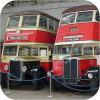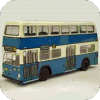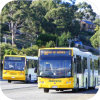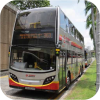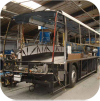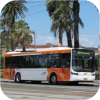SHOWBUS AUSTRALIA BUS IMAGE GALLERY
Endeavour Coach Company of Geelong
 |
 |
||
Page 5 |
|||
|
The driver's cab is pretty much unchanged with the Bristol badge still in centre place on the wheel.
Picture ref A2743 |
|
Another rear view showing the umatching red panels on the rear and faded sign writing. As already mentioned the engine is now transverse, which was the standard fitment in the vast majority of Bristol VR buses, designated VRT. The Standerwick fleet had the longitudinally mounted engine (VRL) which was the original installation in the two prototype buses, one of which went for trial with Bristol Omnibus and the other with Central SMT in 1966. In 1968 the UK government introduced a bus grant to help modernise bus fleets which was only available on transverse engined doubledeckers, which brought about the demise of the VRL. In addition to the thirty Standerwick models over twenty VRL were sold to Johannesburg and Pretoria. All had long wheelbases, making 11m in overall length and accounting for the second L in the chassis designation. The final letter, H, related to the height of the chassis frame, the alternative being L for low. Finishing off the designation is 6 for the number of engine cylinders and L for the engine manufacturer: Leyland. Standerwick's were thus VRLLH6L, however with the engine transplant in 0880AO this is uniquely a Bristol VRTLH6L.
Picture ref A2744 |
|
Back in 2014 the bus saw little use. There was an annual trip to a Thomas the Tank engine steam train day out, but little else in the offing. Licensing laws in Australia means that it is relatively inexpensive to keep a vehicle roadworthy but used rarely.
Picture ref A2745 |
|
Eventually the battery problems are solved, power is restored, and as dusk falls, the VR is ready to take to the road.
Picture ref A2746 |
|
Out of the corner of the yard, away from the B10M decker, the VR poses for the camera.
Picture ref A2747 |
 |
 |
||
Page 5 |
|||



